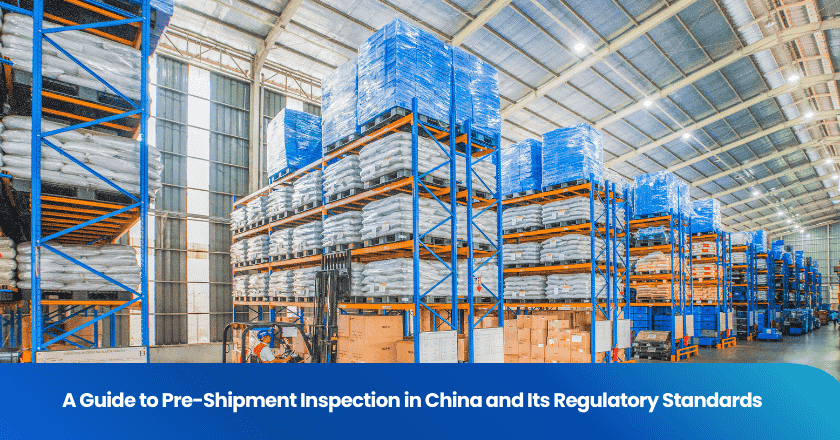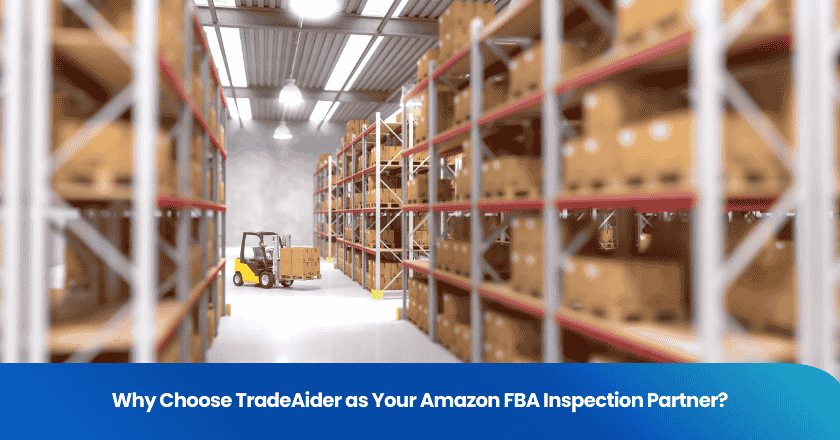
Pre-shipment inspection in China refers to the systematic evaluation of goods before export. Importers and exporters rely on this process to verify product quality and ensure regulatory standards. Inspectors check that shipments meet specifications and legal requirements. This step protects buyers from receiving substandard products. Companies that prioritize compliance reduce risks and build trust in international trade.
Pre-Shipment Inspection in China
Definition and Purpose
Pre-shipment inspection in China refers to the systematic evaluation of goods before export. Inspectors examine products to confirm that they meet the buyer’s specifications and comply with regulatory standards. This process helps exporters and importers avoid costly mistakes and ensures that shipments match contractual agreements. The main purpose centers on verifying product quality, quantity, and packaging. Inspectors also check labeling and documentation to prevent customs delays.
Note: Pre-shipment inspection in China acts as a safeguard for international trade. Companies use this process to reduce risks and maintain compliance with both domestic and international regulations.
China pre-shipment inspection supports global supply chains by providing transparency and accountability. Importers rely on inspection reports to make informed decisions and protect their investments. Exporters benefit from reduced disputes and improved customer satisfaction.
Key Features
Pre-shipment inspections in China include several essential elements that contribute to their effectiveness. The following list highlights the main features:
- Comprehensive Product Checks: Inspectors assess physical appearance, functionality, and safety standards.
- Quantity Verification: Teams count and measure goods to ensure accuracy.
- Packaging Assessment: Inspection covers packaging integrity and suitability for transport.
- Documentation Review: Officials verify certificates, invoices, and compliance documents.
- Sampling and Testing: Inspectors may select samples for laboratory analysis or on-site testing.
| Feature | Description |
|---|---|
| Product Quality | Confirms adherence to specifications |
| Quantity | Ensures shipment matches order |
| Packaging | Checks for damage and proper labeling |
| Documentation | Verifies legal and regulatory paperwork |
| Sampling | Tests for compliance with safety standards |
China pre-shipment inspection provides a structured approach to quality control. The process helps businesses meet regulatory requirements and avoid penalties. Companies that follow these steps build stronger relationships with partners and customers.
Why Pre-Shipment Inspections Matter
Quality Assurance
Pre-shipment inspection in China plays a vital role in the quality control process. Companies use this step to confirm that products meet the required standards before they leave the factory. Inspectors check for defects, inconsistencies, and any issues that could affect performance. This approach helps businesses avoid costly returns and customer complaints.
A strong quality control system builds trust between buyers and suppliers. When companies implement a thorough quality assurance process, they demonstrate a commitment to delivering reliable goods. This process also supports long-term business relationships.
Tip: Consistent quality control reduces the risk of shipment delays and product recalls.
The quality control process includes several steps:
- Inspectors review product samples for compliance with specifications.
- Teams verify packaging and labeling accuracy.
- Staff test product functionality and safety features.
- Inspectors document findings and recommend corrective actions.
A focus on quality assurance ensures that only products meeting expectations reach international markets. This attention to detail protects a company’s reputation and supports growth.
Regulatory Compliance
Compliance stands as a critical factor in international trade. Companies must follow both domestic and foreign regulations to avoid penalties and shipment rejections. Pre-shipment inspections help businesses identify and address potential compliance issues before goods leave China.
Inspectors check documentation, labeling, and product standards to ensure alignment with import requirements. They also verify that shipments meet safety and environmental regulations. This process minimizes the risk of customs delays and legal disputes.
| Compliance Checkpoint | Purpose |
|---|---|
| Documentation Review | Confirms accuracy and completeness |
| Labeling Verification | Ensures adherence to import standards |
| Safety Standards | Protects consumers and meets legal norms |
Companies that prioritize compliance benefit from smoother customs clearance and fewer disruptions. Effective quality control and compliance practices support successful global trade operations.
China Pre-Shipment Inspection Regulations
National Laws and Standards
China pre-shipment inspection operates under a robust legal framework. The country enforces several key laws and standards to ensure product quality and safety before export. The primary regulation is the "Import and Export Commodity Inspection Law of the People’s Republic of China." This law outlines the requirements for inspection, quarantine, and supervision of goods. It mandates that certain products must undergo inspection before leaving the country.
The General Administration of Customs of China (GACC) issues detailed implementing rules. These rules specify which goods require inspection and the procedures for each category. The "Standardization Law of the People’s Republic of China" also plays a significant role. This law sets the technical standards for products, packaging, and labeling. Together, these regulations create a comprehensive system that supports compliance and protects both domestic and international markets.
Note: Adhering to national standards helps exporters avoid shipment delays and penalties.
Government Agencies
Several government agencies oversee china pre-shipment inspection. Each agency has a specific role in the process. The General Administration of Customs of China (GACC) serves as the main authority. GACC manages the inspection and quarantine of goods at the border. It ensures that shipments meet all legal and safety requirements.
The State Administration for Market Regulation (SAMR) develops and enforces product standards. SAMR works closely with GACC to monitor compliance with technical and safety regulations. The Certification and Accreditation Administration of China (CNCA) supervises the certification of products and inspection bodies. CNCA ensures that only qualified organizations conduct inspections.
| Agency | Role in Pre-Shipment Inspection |
|---|---|
| GACC | Oversees inspection and quarantine at customs |
| SAMR | Sets and enforces product standards |
| CNCA | Accredits inspection and certification bodies |
These agencies collaborate to maintain strict oversight of the inspection process. Their combined efforts help exporters and importers achieve compliance with all relevant regulations.
International Guidelines
China aligns its inspection practices with international guidelines to facilitate global trade. The country participates in agreements such as the World Trade Organization (WTO) Agreement on Pre-shipment Inspection. This agreement sets out principles for transparency, non-discrimination, and procedural fairness in inspection activities.
China also references standards from organizations like the International Organization for Standardization (ISO). These standards provide benchmarks for product quality, safety, and environmental protection. By following international guidelines, China ensures that its inspection procedures meet global expectations and support smooth cross-border transactions.
Tip: Understanding both national and international requirements strengthens a company’s compliance strategy.
China pre-shipment inspection regulations reflect a commitment to quality, safety, and fair trade. Companies that understand these rules can navigate the export process more efficiently and reduce the risk of non-compliance.
Pre-Shipment Inspection Process
Inspection Steps
Pre-shipment inspection in China follows a structured approach to ensure compliance and product integrity. Inspectors begin by reviewing the purchase order and technical specifications. They visit the manufacturing site to observe production and verify that the process meets established standards. Teams conduct finished goods inspection by checking the appearance, functionality, and packaging of products. They select random samples for testing to confirm adherence to quality control requirements.
Inspectors document any discrepancies and communicate findings to the exporter. The inspection team prepares a detailed report that outlines results and recommendations. Exporters address any issues before shipment. This process reduces the risk of non-compliance and supports smooth customs clearance.
Tip: Early identification of problems during inspection helps companies avoid costly delays and rejections.
Typical steps in pre-shipment inspection:
1. Review order details and specifications.
2. Conduct on-site inspection of production.
3. Perform finished goods inspection and sampling.
4. Test product quality and safety features.
5. Document findings and issue inspection report.
6. Resolve discrepancies before shipment.
Required Documents
Compliance with Chinese regulations requires several key documents during pre-shipment inspection. Inspectors request the purchase contract, packing list, and commercial invoice. Exporters must provide certificates of origin and product conformity. Quality control documentation, such as test reports and inspection certificates, supports verification of standards.
| Document | Purpose |
|---|---|
| Purchase Contract | Confirms order details |
| Packing List | Lists items and quantities |
| Commercial Invoice | Details transaction value |
| Certificate of Origin | Verifies product source |
| Product Conformity Cert. | Confirms compliance with standards |
| Quality Control Reports | Documents inspection and testing results |
Proper documentation ensures that shipments meet regulatory requirements and pass customs checks. Exporters who maintain accurate records demonstrate commitment to quality control and regulatory compliance.
Compliance and Common Challenges
Exporter and Importer Duties
Exporters and importers play essential roles in maintaining compliance throughout the pre-shipment inspection process. Exporters must prepare accurate documentation and ensure that products meet all regulatory standards. They verify that goods align with technical specifications and packaging requirements. Importers review inspection reports and confirm that shipments satisfy destination country regulations. Both parties communicate regularly to address any discrepancies and prevent delays.
A clear understanding of product compliance helps exporters avoid penalties and shipment rejections. Importers rely on thorough documentation to facilitate customs clearance. Each party must monitor changes in regulatory standards and update procedures as needed. Effective collaboration between exporters and importers supports a smooth inspection process and strengthens global trade relationships.
Tip: Regular training on compliance requirements helps teams stay informed and reduces the risk of errors.
Common Issues and Solutions
Companies often encounter challenges during pre-shipment inspection in China. Documentation errors, incomplete labeling, and missed deadlines can disrupt the export process. Inspectors may find discrepancies between product samples and order specifications. These issues can lead to shipment delays or additional costs.
To address these challenges, businesses implement strict quality control measures. They conduct internal audits and review compliance checklists before inspection. Teams use digital tools to track documentation and monitor regulatory updates. Clear communication between exporters, importers, and inspection agencies ensures that problems are resolved quickly.
| Common Issue | Solution |
|---|---|
| Documentation errors | Use standardized templates |
| Labeling mistakes | Review requirements regularly |
| Missed deadlines | Set reminders for key milestones |
| Specification gaps | Perform pre-inspection audits |
Companies that prioritize compliance reduce risks and maintain strong reputations in international markets. Proactive problem-solving and attention to detail support successful export operations.
Pre-shipment inspection in China supports product quality and regulatory compliance. Companies that understand inspection steps and legal standards achieve smoother trade operations. Staying informed about regulatory updates helps businesses avoid costly mistakes.
- Review inspection requirements regularly.
- Train teams on compliance best practices.
- Monitor changes in national and international standards.
Staying proactive with compliance ensures long-term success in global markets.
FAQ
What products require pre-shipment inspection in China?
Most exported goods, especially food, electronics, textiles, and chemicals, require inspection. The General Administration of Customs of China publishes a list of regulated products. Exporters should check the latest requirements before shipping.
How long does the pre-shipment inspection process take?
Inspection duration depends on product type and volume. Most inspections finish within one to three days. Delays may occur if inspectors find discrepancies or if documentation is incomplete.
Who pays for the pre-shipment inspection?
Exporters usually cover inspection fees. Costs vary based on product category and inspection scope. Importers may negotiate payment terms in the purchase contract.
What happens if goods fail the inspection?
Inspectors issue a report detailing non-compliance. Exporters must correct issues before resubmitting goods for inspection. Failure to comply may result in shipment delays or rejection by customs.
Are international standards recognized during inspection?
China recognizes international standards such as ISO and WTO guidelines. Inspectors compare products against these benchmarks to ensure global compliance. This practice supports smoother cross-border trade.
Grow your business with TradeAider Service
Click the button below to directly enter the TradeAider Service System. The simple steps from booking and payment to receiving reports are easy to operate.



